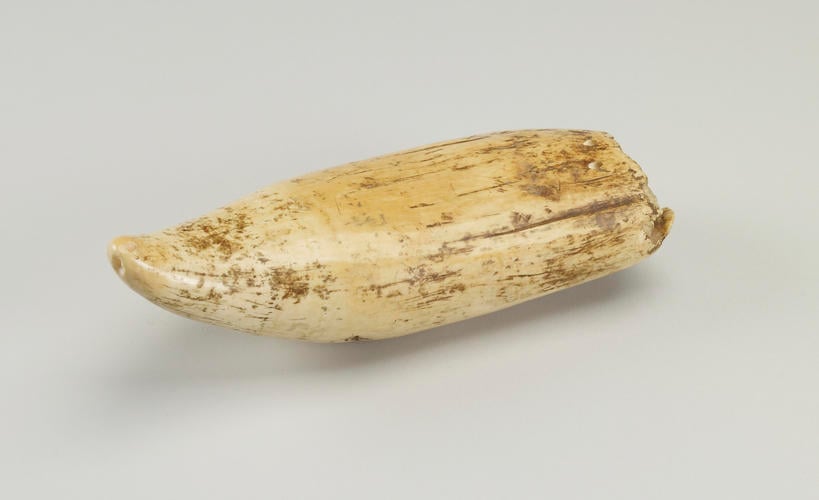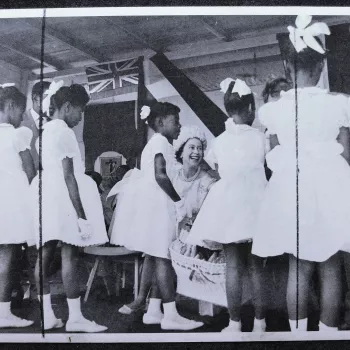Presentation whale tooth 1900-53
Bone, fibre | 23.0 x 9.5 x 7.0 cm (whole object) | RCIN 60118
-
A presentation whale tooth, drilled and threaded onto a plaited fibre cord.
In Fijian culture teeth are traditionally collected from the lower jaws of beached whales, and since whale beachings are a relatively rare occurrence, the teeth are highly prized. This tooth retains its original pale cream colour but in some cases whales' teeth are rubbed with coconut oil and turmeric, or smoked, to turn them a rich tobacco colour. When threaded on a cord, they are known as tabua, and they play an important role in traditional ceremonies of marriage, mourning and peace-making. Rather than being worn, they are exchanged by participants while formal speeches are made. They are also used by high-ranking chiefs to welcome guests on state occasions.
Provenance
Presented to Queen Elizabeth II during her Commonwealth Tour of 1953-4.
On 17 December 1953 the SS Gothic sailed into the harbour at Suva, the capital of Fiji, bringing Queen Elizabeth II and Prince Philip, Duke of Edinburgh to the region for the first time. In accordance with traditional Fijian welcome, outrigger canoes from the surrounding islands escorted the liner to its anchorage and the Governor General, Sir Ronald Garvey, came on board to greet Her Majesty.
Before Queen Elizabeth II went ashore, the leading Fijian chiefs performed the ceremony of cavuikelekele, or 'invitation to land', during which tabua were offered. Several other tabua were presented on this occasion, including RCIN 74624 and RCIN 74625. -
Creator(s)
(nationality)Acquirer(s)
-
Medium and techniques
Bone, fibre
Measurements
23.0 x 9.5 x 7.0 cm (whole object)
Category
Alternative title(s)
Tabua
Place of Production
Fiji









